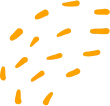🎯 What does this mean?
A hyperbolic paraboloid is a three-dimensional saddle-shaped surface that curves upward in one direction and downward in a perpendicular direction. It combines properties of both parabolas and hyperbolas, creating a surface that is both concave and convex depending on the viewing direction.
🎯 Geometric Interpretation
A hyperbolic paraboloid represents a perfect saddle shape - it curves upward like a parabola in one direction and downward like a parabola in the perpendicular direction. This creates a surface with negative Gaussian curvature everywhere, making it both a ruled surface and a minimal surface with fascinating geometric properties.
\[ a \]
Scale parameter in x-direction - controls the rate of upward curvature
\[ b \]
Scale parameter in y-direction - controls the rate of downward curvature
\[ c \]
Scale parameter in z-direction - controls overall vertical scaling
\[ (h, k, l) \]
Saddle point coordinates - the center point of the hyperbolic paraboloid
\[ u, v \]
Parameters in parametric form - independent variables ranging over all real numbers
\[ K \]
Gaussian curvature - always negative for hyperbolic paraboloids
\[ H \]
Mean curvature - zero for hyperbolic paraboloids (minimal surface property)
\[ \text{Saddle Point} \]
Critical point where surface has minimum in one direction, maximum in perpendicular direction
\[ \text{Principal Curvatures} \]
Maximum and minimum curvatures at any point - always opposite signs
\[ \text{Asymptotic Lines} \]
Directions of zero curvature on the surface - correspond to ruling directions
\[ \text{Rulings} \]
Two families of straight lines lying entirely on the surface
\[ \nabla F \]
Gradient vector - provides normal direction to surface at any point
🎯 Essential Insight: A hyperbolic paraboloid is nature's "saddle shape" - it curves up in one direction and down in the perpendicular direction, creating perfect balance! 📊
🚀 Real-World Applications
🏗️ Architecture & Structural Engineering
Roof Design & Shell Structures
Hyperbolic paraboloid roofs provide exceptional structural strength while using minimal materials, seen in modern stadiums, airports, and architectural landmarks
🍟 Manufacturing & Design
Chip Shape & Industrial Forms
Pringles potato chips use hyperbolic paraboloid shape for structural integrity and efficient packaging, while industrial components utilize this geometry for strength
🎨 Computer Graphics & Animation
Surface Modeling & Visual Effects
3D modeling software uses hyperbolic paraboloids for creating realistic surfaces, cloth simulation, and architectural visualization in films and games
🔬 Physics & Mathematics
Minimal Surfaces & Optimization
Soap films, membrane physics, and optimization problems involving saddle points utilize hyperbolic paraboloid mathematics for theoretical and practical applications
The Magic: Architecture: Structurally efficient roof designs, Manufacturing: Optimized product shapes for strength, Graphics: Realistic surface modeling and animation, Physics: Minimal surface theory and optimization
Before memorizing equations, develop this core intuition about hyperbolic paraboloids:
Key Insight: A hyperbolic paraboloid is like a horse saddle - it curves upward from front to back (like sitting in the saddle) but curves downward from side to side (like the saddle draping over the horse's back)!
💡 Why this matters:
🔋 Real-World Power:
- Architecture: Hyperbolic paraboloid roofs provide maximum strength with minimum material
- Engineering: Saddle shapes distribute stress optimally in structural components
- Manufacturing: Products like Pringles use this shape for structural integrity
- Mathematics: Represent critical points and optimization problems in calculus
🧠 Mathematical Insight:
- Combines parabolic curvature in two perpendicular directions with opposite orientations
- Doubly ruled surface - contains two families of straight lines
- Minimal surface with zero mean curvature everywhere
🚀 Study Strategy:
1
Visualize the Saddle Shape 📐
- Start with: z = x²/a² - y²/b² (up in x-direction, down in y-direction)
- Picture: Horse saddle or Pringles chip shape
- Key insight: "How do opposite curvatures create this surface?"
2
Understand Cross-Sections 📋
- x-direction (y=0): Upward parabola z = x²/a²
- y-direction (x=0): Downward parabola z = -y²/b²
- Horizontal cuts (z=constant): Hyperbolas for z≠0, intersecting lines for z=0
3
Explore Ruled Surface Property 🔗
- Two families of straight lines lie entirely on the surface
- Through every point pass exactly two straight lines
- Makes construction possible using only straight structural elements
4
Connect to Applications 🎯
- Architecture: Roof structures that are both strong and elegant
- Manufacturing: Product designs balancing strength and material efficiency
- Mathematics: Saddle points in optimization and critical point analysis
When you see hyperbolic paraboloids as "saddle shapes with opposite curvatures," analytic geometry becomes a powerful tool for understanding architectural efficiency, structural optimization, and the beautiful mathematics of minimal surfaces!
Memory Trick: "Horses Prefer Riding Over Pleasant Rolling Areas" - SADDLE: Up in one direction, down in perpendicular, RULED: Contains straight lines, MINIMAL: Zero mean curvature
🔑 Key Properties of Hyperbolic Paraboloids
📐
Saddle Point Geometry
Has a saddle point where surface curves up in one direction, down in perpendicular
Represents critical points in multivariable calculus optimization problems
📈
Doubly Ruled Surface
Contains two families of straight lines lying entirely on the surface
Through every point pass exactly two straight lines from different families
🔗
Minimal Surface Property
Mean curvature is zero everywhere on the surface
Represents locally minimal area surfaces like soap films
🎯
Negative Gaussian Curvature
Gaussian curvature K < 0 at every point on the surface
Distinguishes it from elliptic paraboloids and other quadric surfaces
Universal Insight: Hyperbolic paraboloids represent nature's solution for creating strong, efficient surfaces - they balance opposing curvatures to achieve optimal structural properties!
Standard Form: z = x²/a² - y²/b² shows opposite curvatures in perpendicular directions
Cross-Sections: Parabolas in principal directions, hyperbolas in horizontal planes
Ruled Surface: Can be constructed entirely from straight lines - two families intersect
Applications: Architectural roofs, structural engineering, product design, and mathematical optimization



